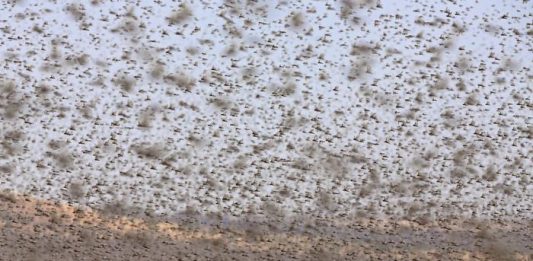Trillions of voracious locusts are stretching over thousands of miles.
In the Horn of Africa, second-generation spring swarms are present in northwest Kenya, eastern Ethiopia, and parts of Somalia.
Breeding continues in eastern and northern Ethiopia and in central and northern Somalia where hopper bands are present.
Most of the swarms in northwest Kenya will migrate northwards and cross South Sudan to Sudan while other swarms will migrate to Ethiopia.
A few swarms could transit northeast Uganda. Swarms that concentrate in northern Somalia are likely to move east to the Indo-Pakistan summer breeding areas.
Breeding may commence in areas of recent rains on the Red Sea coast in Yemen and Saudi Arabia while breeding will continue in the interior of Yemen. Some swarms could migrate from Yemen to northern Somalia and northeast Ethiopia in July.
While the northward swarm migration from Kenya is imminent, the later it starts, the more likely swarms will find good breeding conditions once they arrive in Sudan and this will reduce the risk of further migration to West Africa.
In southwest Asia, many of the spring-bred swarms migrated to the Indo-Pakistan border before the monsoon rains so some swarms continued east to northern states and a few groups reached Nepal.
These swarms will return to Rajasthan with the start of the monsoon in the coming days to join other swarms still arriving from Iran and Pakistan, which is expected to be supplemented by swarms from the Horn of Africa in about mid-July.
Early breeding has already occurred along the Indo-Pakistan border where substantial hatching and band formation will take place in July that will cause the first-generation summer swarms to form in mid-August.
Sudan, Ethiopia, South Sudan, Somalia, Pakistan, and India should remain on high alert during the next four weeks. West Africa should continue to take anticipatory measures and preparatory steps.



No comments:
Post a Comment